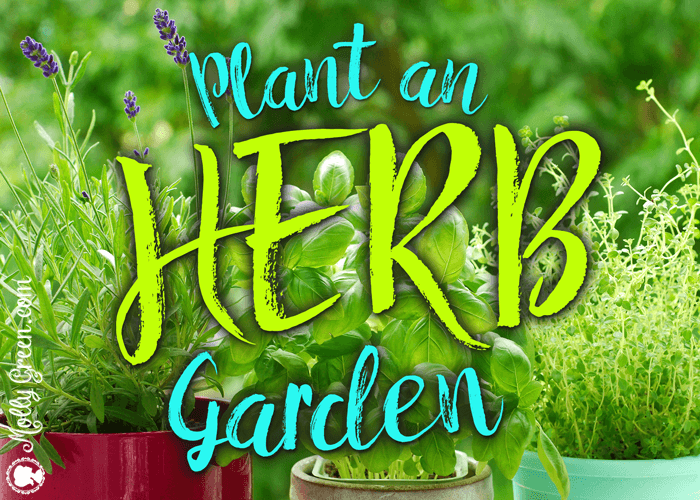By Stephanie Oaks
The herb garden, whether grown inside or out, is an essential part of a healthy household. Fresh herbs grown at home provide much-needed nutrients and can reduce our reliance on the doctor’s office. They are also much more affordable than those sold at the grocery store. And, of course, they add seasonally unique flavors to our meals. In this article, I cover all the necessary basics of herb gardening for beginners. Then, I will get into the details of everything you need to know about growing thyme.
Health Benefits of Herb Gardens
First, both dried and fresh herbs provide vitamins, minerals, and phytonutrients in their natural forms that are easily absorbed by the body. Freshly cut herbs from right outside the back door have higher levels of these volatile nutrients. Dried herbs that have been stored in whole leaf form from the garden have higher levels of essential oils than plastic bottles of crushed herbs. Plastic bottles of crushed herbs often have been irradiated and stripped of their nutrients. Worse yet, they have often been grown in soil that lacks the minerals required to develop a nutrient-dense herb.
Herbs can be used both as preventative medicine and to treat various symptoms. The antimicrobial properties of most herbs can eliminate the need for antibiotics that wreak havoc on gut flora. A simple salve can prevent infection, herbal tea has many health benefits, including calming nerves and supporting the immune system, and tinctures can cleanse the system of various toxins.
Herb Gardening for Beginners
Herb gardening for beginners involves starting out small. Here are the top things to keep in mind:
- Choose the herbs that you use the most, and get to know the amount of sunlight, watering, and pruning that they require.
- They can be grown in well-draining pots in a south-facing window, on a sunny porch, or on a back patio. You might even explore a DIY indoor hydroponic herb garden.
- An herb garden can be created in the yard or along the side of the house in an area that receives at least 6 hours of sunlight and has well-draining soil.
- They can be incorporated into the vegetable garden as companion plants, deterring pests, attracting beneficial insects, improving the flavor of vegetables, and depositing necessary nutrients into the soil.
- Herb plants need to be mulched well in order to reduce competition from weeds, retain moisture in the soil, and to provide organic matter for beneficial organisms to break down.
- And, finally, when herb plants are going dormant in the fall, cut back growth and spread compost to be incorporated into the soil for the coming season.
A Guide to Growing Thyme
In the months to come, we will look closely at herbs that can be easily grown in all regions of the country. We will also be exploring herbs that can be used for both culinary and medicinal purposes. This month’s focus is on the beloved herb Thyme. Thyme is a hardy perennial that prefers well-drained soil and full sun, although it benefits from afternoon shade in the heat of the summer here in the South. In many parts of the country, this herb can be cut from the garden year round. As a result, growing thyme is a perfect place to start with herb gardening for beginners!
Thyme can be started from seed indoors. Be sure to soak seeds in a moist paper towel for 24 hours prior to seeding for best results. This herb grows well in pots, containers, garden boxes and herb beds, or indoors in a south-facing window. Cut back and divide plants in fall or spring. When harvesting, cut only half of the new growth at a time. Thyme plants do not respond well to over-harvesting.
Some important facts that you need to know about growing thyme:
- Recommended varieties: Mother Thyme, Italian Thyme, English Thyme, Lemon Thyme, Common Thyme (Common Thyme is the variety that thyme essential oils are made from).
- Basic medicinal properties: Thyme leaves are anti-viral, anti-fungal, anti-bacterial, liver detoxifying, immune boosting, and are helpful for coughs.
- Uses: Use in teas, stews, roasts, soups and broths, or in the garden to attract honeybees.
- Preservation methods: Dry by hanging in bunches or in a dehydrator on flat trays. You can also make herbed oil, create a tincture, or freeze in water in ice cube trays.
- Companion planting: Plant near eggplant, salad burnet, potatoes, and strawberries. Also plant near brassicas to deter cabbage moths.
How to make a bouquet garni with thyme:
- 1 bay leaf
- 1 T dried parsley
- 1 t dried thyme
Cut all ingredients finely with herb scissors. Use in soups, stocks, sauces, and casseroles. Fresh herbs can be bundled and used similarly, removing the bundle after preparation. Dried herbs can also be placed in a cheesecloth pouch and removed before serving.
Stephanie Oaks lives in Ashland City, Tennesee, where she and her husband own and operate No. 9 Farms. No. 9 Farms is an organic farm that specializes in berries, herbs, fruits and vegetables, and Christmas trees. Stephanie spends the remainder of her time homeschooling their two teenage children and teaching classes on organic gardening and healthy cooking.
If these great tips have you wanting more, be sure to check out our article on how to preserve herbs!





